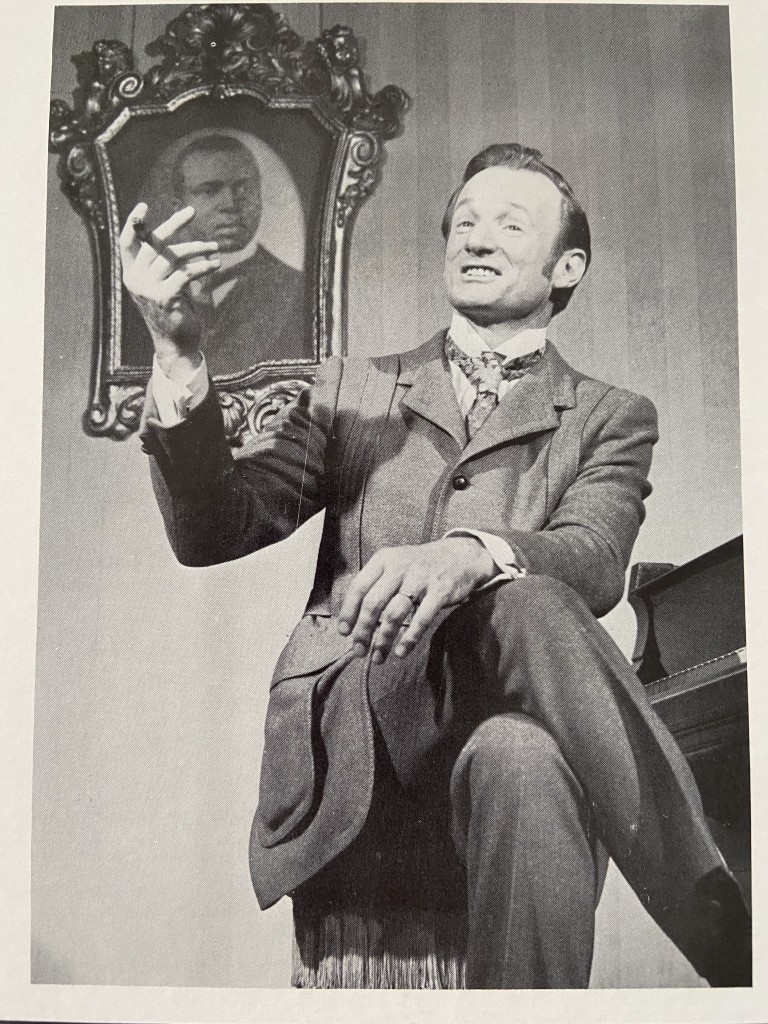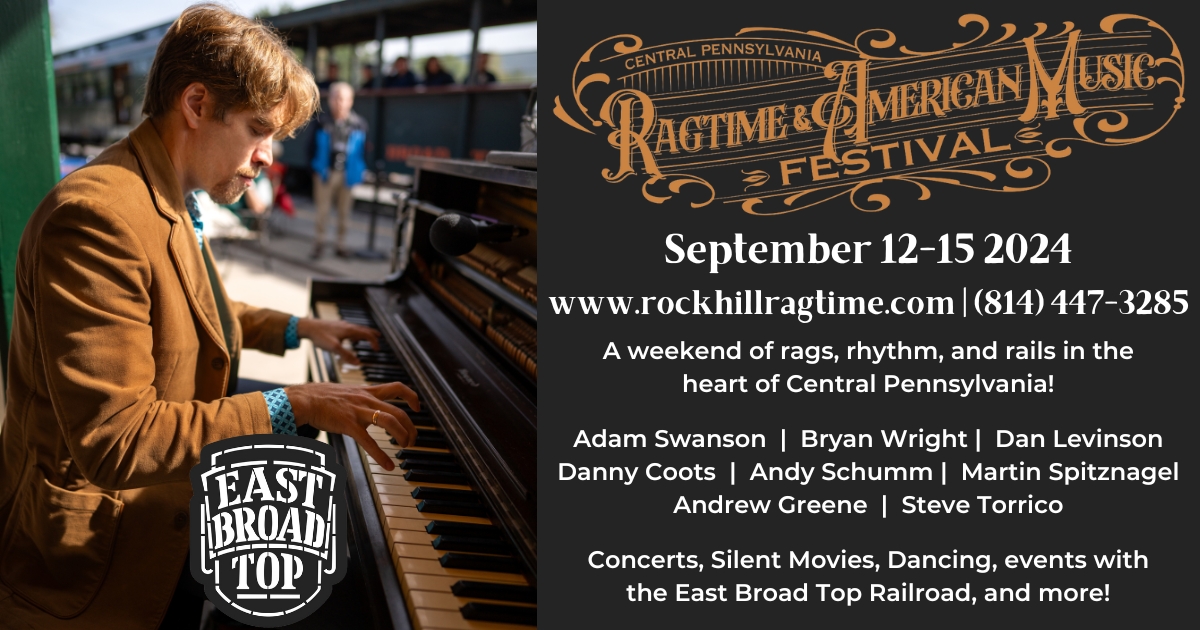The “ragtime revival” started with Wally Rose’s surprise hit recording, in December 1941, of George Botsford’s “Black And White Rag.” At that time, there was little ragtime sheet music on the commercial market, there were no ragtime societies, festivals or concerts, and any rags played professionally were tossed in as throwaways by pianists in local taverns.
For some years thereafter, ragtime was supported by a small handful of pianists who occasionally got some radio play for their recordings, or, like Bob Darch, traveled a barroom circuit. The list consisted, pretty much, of Rose, Darch, Joe “Fingers” Carr (Lou Busch), and Johnny Maddox.
Then along came Max Morath. Max had been playing ragtime in his native Colorado when he decided that he wanted to play ragtime as a full-time profession. He told me that, at that time, he realized that, if he was going to do so, he needed to find a way to make a living out of ragtime that would be more lucrative and dependable than local saloon gigs.
Gifted with an excellent business sense and a thorough grasp of showmanship, Max brought ragtime to the general public in a less casual manner than his contemporaries. His two NET TV series, The Ragtime Era and The Turn Of The Century, not only reached a broader audience for ragtime than anything else up to that time, but also put ragtime in its proper perspective as a worthwhile and living part of America’s musical heritage.
His one-man stage shows built on that foundation, taking the music all over the country, from the New York stage to the hinterlands. In the meantime, Max was turning out LPs of ragtime and ragtime-related vintage music on major labels that were available in local record stores and also producing folios of sheet music that put ragtime in the hands of aspiring ragtime pianists who, like myself, had neither the time nor funds to shop flea markets and antique stores for old music sheets.
Eventually, as everyone knows, through a series of highly improbable coincidences—Joshua Rifkin’s hit LP of Scott Joplin rags for a classical label, the publication of Scott Joplin’s complete works by the New York Public Library, the production of Joplin’s opera Treemonisha, and the use of Joplin’s music for the Academy Award-winning 1973 film, The Sting—ragtime became, for a short time, a national craze. Many rags were brought back into print and anyone who could find middle C on a keyboard made a ragtime recording.

How many of these things would have happened without Max having set the groundwork? Who knows? Yes, Blesh and Janis’ masterful history of ragtime, They All Played Ragtime, had been published to favorable reviews. There was a ragtime club in Canada and one on the West Coast, both of which published newsletters and staged annual festival-type weekends. Ragtime authority Trebor Tichenor was publishing a ragtime periodical. Specialist labels, like Folkways or Good Time Jazz, produced a ragtime LP from time to time.
However, none of these things were known outside of the tiny ragtime community. Max was the one who showed the world that, yes, there was gold to be mined in the ragtime hills.
Max’s death at age 96 on June 18, 2023, to me, symbolizes the end of the ragtime revival. We’re pretty much back where we were in 1941.
Even though all music from the ragtime years is now in the public domain, there is practically no published ragtime commercially available (although some archives now allow downloading of music in their collections, for those who want to do the work to find what’s available). There are a few professional ragtimers playing at local pubs. There are now some ragtime clubs that meet periodically and a few “festivals” as well, but attendance at these events is minuscule.
R.I.P. Max. Your contribution to the music is unequalled.
-:-
A personal footnote: At the time Max’s first TV series appeared, I was finishing my last year of business school, working six nights a week at Boston’s Your Father’s Mustache. On two of those nights, I played solo piano all evening in an upstairs room. I was just playing tunes to whomever stopped by.
I watched Max’s show avidly and learned much, including the fact that, if you want the audience to listen to a tune it doesn’t know, you should provide some kind of context before performing it. So, I started telling the audience something—who composed or recorded the tune, or a story about it—before each number. More people started coming in and, happily, staying.
As many of you know, I’ve done just that on all of my shows ever since and wound up playing all over the US and in some sites abroad. As I told him several times, without Max, there wouldn’t have been a Tex Wyndham. I’m proud to be a graduate of Morath University, and will always treasure my relationship with him.



























